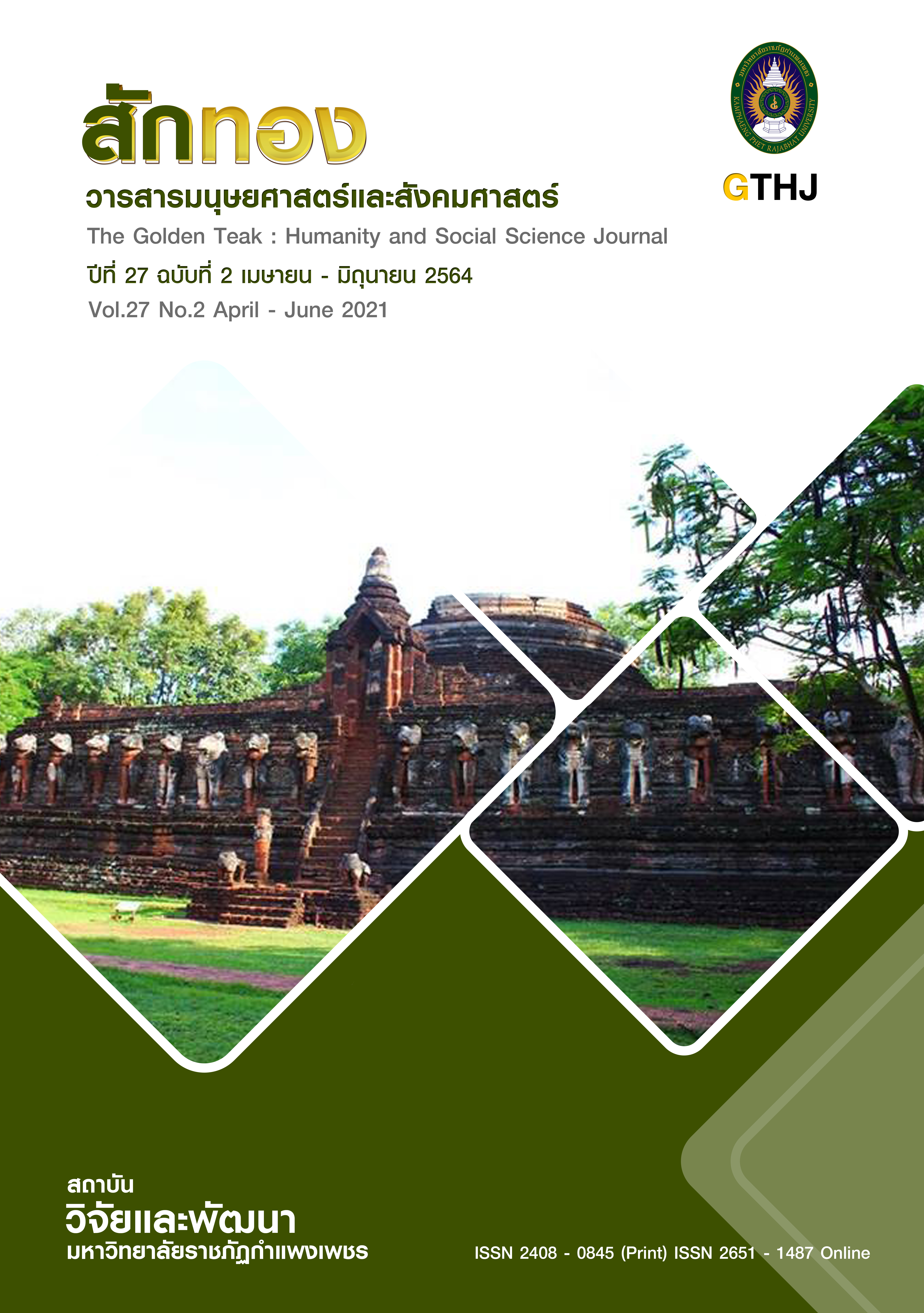The Effects of Cognitively Guided Instruction Learning Management With Brainstorming Technique on Mathematical Problem Solving Ability and Creativity of Prathomsuksa 5 Students
Main Article Content
Abstract
The purposes of this research were; 1. to compare mathematical problem solving ability of prathomsuksa 5 students after using cognitive guided instruction with brainstorming technique with the criterion at 70 percent. 2. to compare mathematical creativity of prathomsuksa 5 students after using cognitive guided instruction with brainstorming technique with the criterion at 70 percent. Population for this research consisted of 15 prathomsuksa 5 students at Watchantharungsrithaworn School. Instruments were lesson plans of cognitive guided instruction with brainstorming technique and mathematical problem solving and mathematical creativity test.The data were analyzed by percentage, mean, standard and content analysis. The results were as follows; 1) The mathematical problem solving ability of prathomsuksa 5 students after using cognitive guided instruction with brainstorming technique was higher than 70 percent. 2) The mathematical creativity of prathomsuksa 5 students after using cognitive guided instruction with brainstorming technique was higher than 70 percent.
Article Details
บทความที่ได้รับการตีพิมพ์เป็นลิขสิทธิ์ของวารสาร สักทอง : วารสารมนุษยศาสตร์และสังคมศาสตร์ สถาบันวิจัยและพัฒนา มหาวิทยาลับราชภัฏกำแพงเพชร
ข้อคิดเห็นใดๆ ที่ปรากฎในวารสารเป็นวรรณกรรมของผู้เขียนโดยเฉพาะ ซึ่งมหาวิทยาลัยราชภัฏกำแพงเพชรและบรรณาธิการไม่จำเป็นต้องเห็นด้วย
References
Department of Learning Management Faculty of Education, Burapha University.
_______. (2013, February-August). Development of statistical reasoning and linking ability
Mathematics to real life by using learning activities like Teaching and Thinking (CGI)
together with using High level question For grade 6. Journal of Education, 24(2),
19-22.
Arivananthan. (2015). Brain Storming Free-flowing creativity for problem-solving. New York :
UNICEF.
Carpenter, T.P. (1989). Teaching as problem solving. In R. I. Charles & E. A. Silver (Eds), The
Teaching and assessing of mathematical problem solving (pp.187-202). Reston,
VA : National Council of Teacher of Mathematics.
Carpenter, E.F., et al. (2000). Cognitively guided instruction : A research-based teacher
professional development program for elementary school mathematics :
Research report. National Center for Improving Student Learning and Achievement in
Mathematics and Science.
Franke, M. & Weishaupt, L. (1998). Using children’s thinking to teach mathematics.
UCLA Urban Education Studies Center, Connections, pp.3-7.
Guilford, J.P. (1967). The Nature of Human Intelligence. New York : McGraw Hill Book.
Intararat, W. (1997). Effects of Brainstorming Training Based on Williams Concept for
Developing ThinkingInnovation of Prathom Suksa grade 3 Phiphatana School, Bangkok. Master Thesis Master of Education, Srinakharinwirot University.
National Council of Teachers of Mathematics. (NCTM). (1989). Curriculum and evaluation
standards for school mathematics. Reston, Virginia : NCTM.
_______. (NCTM). (2000). Principles and standards for school mathematics. Reston, Virginia :
NCTM.
Osborn, A.F. (1957). Applied Imagination. New York : Charles Scribners.
Parnes, S.J. (1967). Creative Behavior Guidebook. New York : Charles Scribner, Son.
Phanmanee, A. (1997). Creativity and learning. Bangkok : Complex print
Rawlinson, J. Geoffrey. (1981). Creative Thinking and Brainstorming. England : Gower Publish.
________. (1981). Creative Thinking and Brainstorming. England : Gower Publish.
Srijaroen, P. (2009). The Effects of Brainstorming on Problem - Solving Ability in
Mathematic of Prathomsuksa VI Student at Watphoraing School in Bangkoknoi
District, Bangkok. Educational Psychology, Master of Education, Srinakharinwirot
university.
Srilasak, P. (2017, December 19). Teacher, Watchantharungsrithaworn School. Interviews.
The Institute for the Promotion of Teaching Science and Technology (IPST). (2012). Math.
(3 rd ed.). Bangkok : The Institute for the Promotion of Teaching Science and
Technology.


